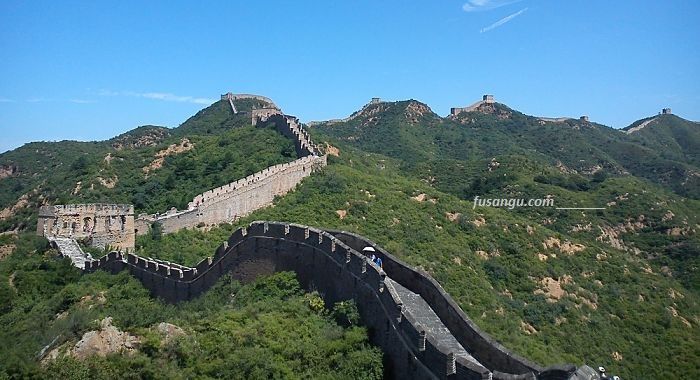
If you can spend only a week in China, you obviously have to focus on a limited region, typically around one or two major cities. Thanks to the vast and capillary high-speed railway network covering large distances is no longer a major obstacle but careful planning is highly advised.
Major destinations for a seven-day journey to China are typically Beijing, Xi’An and Shanghai.We suggest you choose only two of these cities.
In this page we briefly outline a selection of seven-day itineraries in China. For each programme we give suggestions on how to organise the transfers.
Contents
-
First journey to China (choice of the itinerary, main destinations, side trips)
-
Recommended 7-day itineraries(1 - Beijing-Xi’An, 2 - Beijing-Shanghai)
-
Recommended 6-day visa free itineraries (Beijing and HeBei, Shanghai, Jiangsu and Zhejiang)
Seven days in China: choice of the itinerary
Beijing, Xi’An and Shanghai are the firm options on the schedule of most 10-day China itineraries. For a shorter journey it is better to include only a couple of cities. You can still follow a Beijing-Xi’An-Shanghai circular but that would not be satisfactory because you would have to renounce to most side trips, which would be a major drawback.
For such a short journey your choice will also depend on practical circumstances, such as the availability of convenient and reasonably comfortable travel arrangements for the entry and exit itinerary.
Beijing and Shanghai, are typically the most convenient ports of entry into the country but there is an increasing number of international routes that serve also Xi’An, Hangzhou and other cities in China.
All of the itineraries outlined below can easily be organised independently. Resorting to the support of a travel agency can make things easier and smoother and is often a necessity when it comes to arranging the side trips.
Seven days in China: recommended itineraries
Day time transfers between the three major cities that you might want to consider for a 7-day journey (Beijing, Xi’An, Shanghai) require roughly a half day in all cases, regardless of whether you choose to travel by plane (taking into account also the transfers between the city centre and the airport) or by train (high-speed railway). If you want to save time you may opt for night time transfers, which is feasible by train or in equivalent way through late evening flights.
We suggest you focus your journey on two main destinations, devoting 4-5 days to them. The 2-3 remaining days can be used for side-trips.
Here are the itineraries we recommend for a 7-day journey in China:
Itinerary 1: Beijing, PingYao, HuaShan, Xi’An;
Itinerary 2: Beijing, Shanghai, Suzhou, Hangzhou;
Itinerary 3: Beijing, Xi’An, Shanghai;
We assume that the point of arrival and departure is an airport in either Beijing or Shanghai.
Especially if you come from another Asian country, you may also consider other points of entry such as the airports of Nanjing, Hangzhou, Xi’An, Shenzhen or Guangzhou.
Itinerary 1: Beijing, Ping’Yao, Xi’An, HuaShan
This itinerary focuses on destinations in central China, along the Beijing-Xi’An route. Compared to the previous one, this programme is much slower and cheaper.
A well-balanced schedule is as follows:
-
Day 1: Beijing
-
Day 2: Beijing (excursion to the Great Wall)
-
Day 3: Beijing; transfer to PingYao
-
Day 4: PingYao
-
Day 5: Xi’An
-
Day 6: Day trip to HuaShan
-
Day 7: Xi’An; return to Beijing; end of journey
The programme requires three long-distance transfers (two if you find a convenient multi-leg flight itinerary).
How to organise the transfers
If you choose a round trip flight itinerary (entry and exit through the same airport, typically in Beijing), you have to include a transfer from Shanghai to Beijing:
-
Beijing-PingYao (by train)
-
PingYao-Xi’An (by train)
-
Xi’An-HuaShan-Xi’An (by train)
-
Xi’An-Beijing (by plane or by train)
A good choice is to opt for night train for the transfer between Beijing, PingYao and Xi’An.
Itinerary 2: Beijing, Shanghai, Suzhou, Hangzhou
The itinerary briefly outlined below is a classic tour, a great introduction to China’s ancient culture.
A well-balanced schedule is as follows:
-
Day 1: Beijing
-
Day 2: Beijing (excursion to the Great Wall)
-
Day 3: Beijing transfer to Shanghai
-
Day 4: Shanghai
-
Day 5: Hangzhou
-
Day 6: Suzhou
-
Day 7: Suzhou; return to Beijing; end of journey
The programme requires two long-distance transfers (one if you find a convenient multi-leg flight itinerary).
How to organise the transfers
If you choose a round trip flight itinerary (entry and exit through the same airport, typically in Beijing), you have to include a transfer from Shanghai to Beijing:
-
Beijing-Shanghai (by plane of by train)
-
Shanghai-Hangzhou-Suzhou (by train)
-
Shanghai-Beijing (by plane or by train)
You can opt for night trains or day time high-speed trains. The first option is generally cheaper.
Itinerary 3: Beijing, Xi’An, Shanghai
An itinerary through Beijing, Xi’An and Shanghai may follow the schedule indicated below:
-
Day 1: Beijing
-
Day 2: Beijing (excursion to the Great Wall)
-
Day 3: Beijing transfer to Xi’An
-
Day 4: Xi’An
-
Day 5: Xi’An; transfer to Shanghai
-
Day 6: Shanghai
-
Day 7: Shanghai; return to Beijing; end of journey
The programme requires three long-distance transfers (one if you find a convenient multi-leg flight itinerary).
How to organise the transfers
All transfers can be made by plane or train. You can choose night transfers so as to minimise loss of time.
Six-day visa-free itineraries
Under a number of conditions that we suggest you carefully verify, citizens of certain countries can visit a few regions and cities without no need for a tourist visa.
Regions of particular interest where this regime is admitted are the following:
-
Beijing, Tianjin and Hebei Province (JingJinJi region),
-
Shanghai Municipality, Zhejiang and Jiangsu provinces
-
Guangdong Province
Related articles:
Itineraries in China (general article)
First journey to China: classic two-week itinerary
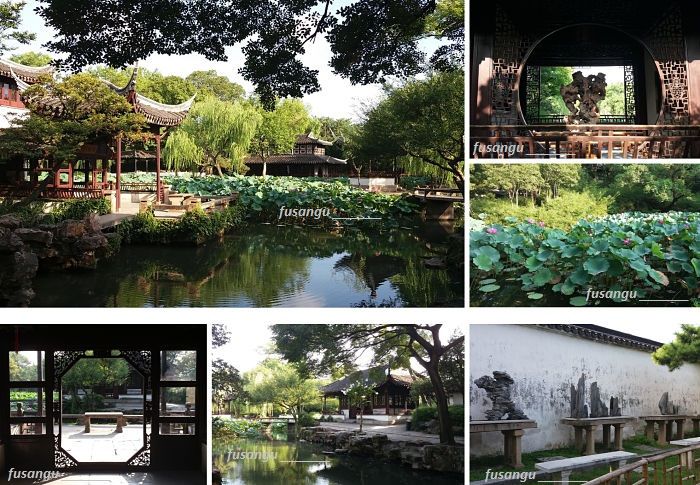
Ten days are a very short period of time for a journey to China. While thanks to the vast and capillary high-speed railway network covering large distances is no longer a major obstacle, careful planning is still required.
Major destinations for a ten-day journey to China are typically Beijing, Xi’An and Shanghai. If you enjoy slow travelling you may opt for a less tight schedule.
In this page we briefly outline a selection of ten-day itineraries in China. For each programme we give suggestions on how to organise the transfers.
Ten days in China: choice of the itinerary
Beijing, Xi’An and Shanghai are the firm options on the schedule of most 10-day China itineraries. This is the typical route and even if you want to consider other options, it is best to do so by starting from this itinerary and applying modifications. This is due to the fact that the three cities mentioned above, particularly Beijing and Shanghai, are typically the most convenient ports of entry into the country.
If you choose to travel by train you can easily add a few destinations along the Beijing-Xi’An-Shanghai route. Another option is to organise day trips from the three major cities.
All of the itineraries outlined below can easily be organised independently. Resorting to the support of a travel agency can make things easier and smoother and is often a necessity when it comes to organising the side trips.
Ten days in China: recommended itineraries
Day time transfers between the three major cities that you might want to consider for a 10-day journey (Beijing, Xi’An, Shanghai) require roughly a half day in all cases, regardless of whether you choose to travel by plane (taking into account also the transfers between the city centre and the airport) or by train (high-speed railway). If you want to save time you may opt for night time transfers, which is feasible by train or in equivalent way through late evening flights. If you consider doing so, take into account how well you can cope with the discomfort such a choice would bring about.
Assuming you opt for only one night time transfer, two half days’ time is absorbed by long-distance transfers. You effectively have to choose how to allocate 9 full days.
We suggest you focus your journey on three main destinations, devoting an entire week, 7 days to them. The two remaining days can be used for side-trips.
If you are on a budget and you are comfortable with such a tough way of travelling, you can opt for night transfers by train (less advisable travelling by bus).
Here are the itineraries we recommend for a 10-day journey in China:
Itinerary 1: Beijing, Xi’An, Shanghai, Suzhou, Hangzhou;
Itinerary 2: Beijing, PingYao, Xi’An, HuaShan, Shanghai;
Itinerary 3: Beijing, Taishan, QuFu, Nanjing, Shanghai;
Itinerary 4: Shanghai, Huangshan, Hangzhou, Suzhou, Nanjing;
Itinerary 5: Beijing, Chengde, Hengshan;
Itinerary 6: Hong Kong, Beijing or Shanghai and their surroundings;
We assume that the point of arrival and departure is an airport in either Beijing or Shanghai.
Especially if you come from another Asian country, you may also consider other points of entry such as the airports of Nanjing, Hangzhou, Xi’An, Shenzhen or Guangzhou.
Itinerary 1: Beijing, Xi’An, Shanghai, Suzhou, Hangzhou
The itinerary briefly outlined below is a classic tour, a great introduction to China’s ancient culture.
A well-balanced schedule is as follows:
-
Day 1: Beijing
-
Day 2: Beijing (excursion to the Great Wall)
-
Day 3: Beijing transfer to Xi’An
-
Day 4: Xi’An
-
Day 5: Xi’An; transfer to Shanghai
-
Day 6: Shanghai
-
Day 7: Shanghai
-
Day 8: Hangzhou
-
Day 9: Suzhou
-
Day 10: Suzhou; return to Beijing; end of journey
The programme requires three long-distance transfers (two if you find a convenient multi-leg flight itinerary).
How to organise the transfers
If you choose a round trip flight itinerary (entry and exit through the same airport, typically in Beijing), you have to include a transfer from Shanghai to Beijing:
-
Beijing-Xi’An (by plane or by train)
-
Xi’An-Shanghai (by plane or by train)
-
Shanghai-Hangzhou-Suzhou (by train)
-
Shanghai-Beijing (by plane or by train)
You can opt for night trains or day time high-speed trains. The first option is generally cheaper.
Itinerary 2: Beijing, Ping’Yao, Xi’An, HuaShan, Shanghai
This itinerary focuses on destinations in central China, along the Beijing-Xi’An route. Compared to the previous one, this programme is much slower and cheaper.
A well-balanced schedule is as follows:
-
Day 1: Beijing
-
Day 2: Beijing (excursion to the Great Wall)
-
Day 3: Beijing
-
Day 4: Beijing; transfer to PingYao
-
Day 5: PingYao
-
Day 6: Xi’An
-
Day 7: Xi’An
-
Day 8: Day trip to HuaShan
-
Day 9: Shanghai
-
Day 10: Shanghai; return to Beijing; end of journey
The programme requires three long-distance transfers (two if you find a convenient multi-leg flight itinerary).
How to organise the transfers
If you choose a round trip flight itinerary (entry and exit through the same airport, typically in Beijing), you have to include a transfer from Shanghai to Beijing:
-
Beijing-PingYao (by train)
-
PingYao-Xi’An (by train)
-
Xi’An-HuaShan (by train)
-
HuaShan-Shanghai (by plane or by train)
-
Shanghai-Beijing (by plane or by train)
A good choice is to opt for night train for the transfer between Beijing, PingYao and Xi’An. Transfers between Xi’An, HuaShan and Shanghai are best made by high-speed trains.
Itinerary 3: Beijing, TaiShan, QuFu, Shanghai
This is another interesting programme, which offers a unique insight into China’s vast cultural heritage. All destinations are conveniently served by high-speed railway lines.
A well-balanced schedule is as follows:
-
Day 1: Beijing
-
Day 2: Beijing (excursion to the Great Wall)
-
Day 3: Beijing
-
Day 4: Beijing; transfer to Taishan
-
Day 5: Ascent to Mount Taishan
-
Day 6: QuFu; transfer to Shanghai
-
Day 7: Shanghai
-
Day 8: Day trip to Suzhou or Hangzhou
-
Day 9: Shanghai
-
Day 10: Shanghai; return to Beijing; end of journey
The programme requires two long-distance transfers (one if you find a convenient multi-leg flight itinerary). When you are based in Shanghai you can opt for one or two side trips. Possible destinations are Suzhou, Hangzhou, Nanjing or a water town.
How to organise the transfers
All transfers for this itinerary can be made by high-speed train.
Related articles:
Itineraries in China (general article)
First journey to China: classic two-week itinerary
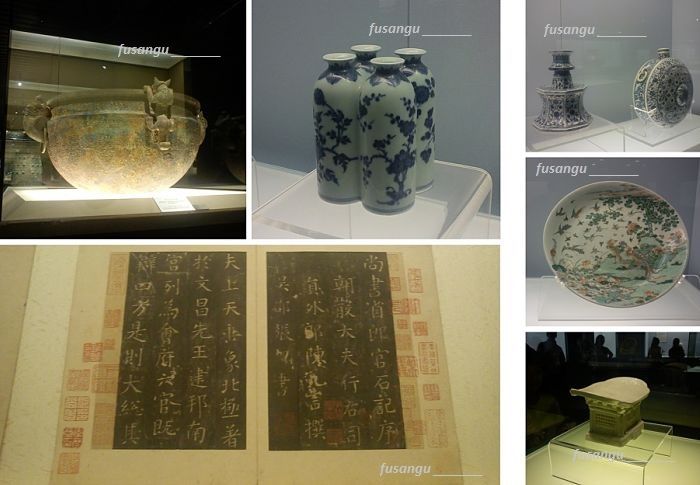
In this page we describe a 3-day visit to Shanghai. Though the city is enormous, a large part of its sightseeing places are concentrated in a relatively small areas. In this
The programme described here includes only one side-trip outside of the limits of the city centre. Around Shanghai are quite a few interesting water towns and villages that retain the beauty of ancient China.
Day 1: City centre
A walking itinerary is a good way to start your visit in Shanghai. A very common path includes the following destinations:
-
Bund (外滩, WaiTan), a waterfront area along the western bank of Huangpu River where the International Settlement was established when China was forced to open up to foreign trade. Here you can see tens of historical buildings which housed once banks and trading houses of former colonial powers;
-
XinTianDi (新天地), a commercial affluent pedestrian area located south of People’s Square. Nearby you can see quite a few shikumen, communal houses in a style developed in Shanghai which combines elements of Chinese and Western residential architecture;
-
LuJiaZui (陆家嘴), the core of the city’s financial centre, famous for its impressive skyscrapers, among which the Oriental Pearl Tower, the JinMao Tower and the Shanghai Tower.
If you do not fancy walking, you can easily take advantage of Shanghai’s modern and efficient subway network.
XinTianDi and the French Concession are popular night-life spots in Shanghai.
Day 2: Shanghai, Old City
Despite devastation suffered during the last century there are still a few places when you can get an idea of how the city looked like in the past.
For the second full day in Shanghai we suggest an itinerary through the core of the ancient. Along the way you can visit the following places:
-
Shanghai Old City (上海老城厢, ShangHai LaoChengXiang), the site of the ancient walled city. Not much remains of its fortifications and ancient buildings. A small section of the defensive wall can be seen near DaJing Pavilion (大境阁, DaJingGe). Within its limits are the Temple of the City Gods (城隍庙, ChengHuangMiao) and YuYuan Garden. The area is full of shops, restaurants and food stalls;
-
Garden of Mandarin (豫园, YuYuan), a beautiful Ming Dynasty traditional garden. It offers a good introduction into appreciating this exquisite form of art (particularly valuable if you are to visit Suzhou next as suggested in this itinerary);
-
Museum of Shanghai (上海博物馆, Shanghai BoWuGuan), an excellent introduction to China’s great civilization. The museum displays a rich collection of bronzes, ceramics, porcelain, paintings, seals, scrolls and other precious works of art. Entrance is free so you can exploit this circumstance by choosing to visit it twice.
Ancient temples
Without leaving the centre you can also visit important historical temples such as Jing’AnSi (静安寺), originally built during the Three Kingdoms Period, LongHuaSi (龙华寺), an expansive monastery which preserves the architectural style of Song Dynasty Period, and YuFoChanSi (玉佛禅寺 | Jade Buddha Temple), a relatively modern temple notable for two large jade Buddha statues.
Day 3: Western Shanghai
In the morning of the third day, you can either return to the Museum of Shanghai or visit QiBao, a small old town lying in the suburbs of the city.
Though not coming off as an authentic place but rather a tourist site, QiBao (七宝) offers pleasant images and plenty of opportunities to try the local food at cheap prices. Of historical and cultural interest is QiBao Temple.
QiBao is served by a subway line (Line 9). The journey from the centre of Shanghai takes around half a hour.
Once you are back to the centre you may want to indulge in some shopping. There are plenty of areas suitable for it:
-
French Concession (上海法租界, Shanghai FaZuJie), foreign settlement established in 1849. Despite development after the war it still retains a good number of old houses and boutiques along beautiful wide avenues with roadside trees;
-
East Nanjing Road (东南京路, DongNanJingLu), a long avenue full of shops and department stores. Many of them sell cheap goods. The road runs very close to People’s Square.
Variant: one-day excursion
Shanghai is surrounded by a few interesting ancient towns and villages. The cities of Hangzhou, Suzhou and Nanjing can be visited with a one-day excursion from Shanghai but this solution is not ideal, as those destinations deserve much more time.
Among possible destinations for a one-day side trip from Shanghai are the following:
-
1) Wuzhen;
-
2) Shaoxing;
-
3) Putuoshan.
Related articles:
China suggested 2-week itinerary
Other destinations:
If you are interested in discovering the beauty and majesty of imperial China, you should not miss out on a visit to Xi’An.
The former Chang’An is one of the Great Four Capitals of China and a trove of cultural treasures, landmarks and museums of outstanding importance and beauty.
In this page we outline a 36-hour programme, suitable for the first visit to the city. The itinerary aims to offer a wide picture of Xi’An.
Xi'An 1,5-day itinerary
Xi’An is a huge city but it is in its core that the majority of its places of interest are concentrated. It is therefore possible to organise the visit to Xi’An quite easily. Public transportation is quite efficient and most sites can be reached by bus and subway.
Taxis are plentiful and quite cheap and efficient. For such a short trip we suggest you do not count out the option of using the taxi.
Itinerary: Terracotta Army Archaeological Site, Xi’An city centre
Finding a convenient hotel in the centre is quite easy. There is a great number of structures that can cater for any kind of traveller. Advance booking is recommended.
|
Xi'An 1,5-day itinerary Terracotta Army Archaeological Site, Xi’An city centre, historical pagodas Evening arrival |
|
|
Where to stay |
City Centre, (Bell Tower, BeiLin) |
|
Day 1 |
Destinations:
Other options: Shaaxi History Museum
How to get around:
|
|
Day 2 (morning) |
Destinations:
How to get around:
|
Morning arrival
If you reach Xi’An by noon, we suggest you leave your baggage at the hotel and begin your journey right away with a visit to the city centre. The next day can be devoted to the visit to the archaeological site and the historical pagodas. In this case you may opt for a tourist package.
Related articles:
Other destinations:
Suzhou 1-day itinerary | Suzhou 2-day itinerary
Hangzhou 1-day itinerary | Wuzhen 1-day itinerary
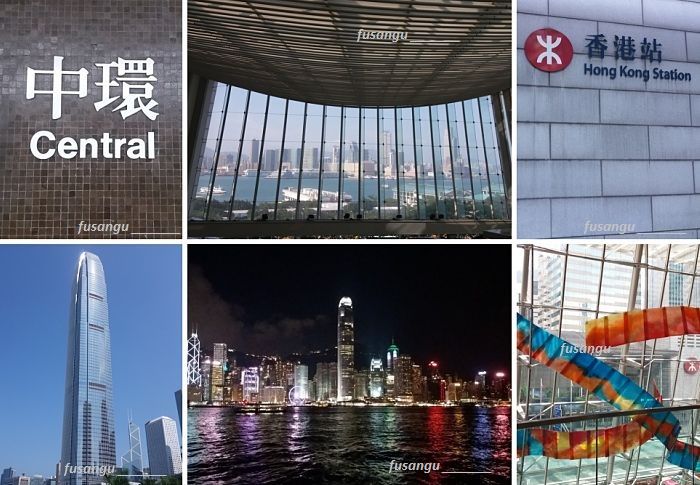
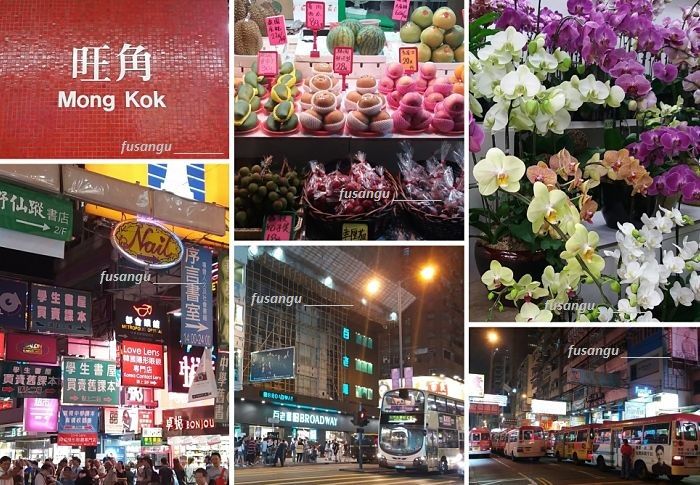
Hong Kong is a unique city that combines a wide variety of urban and natural landscapes. In many districts few hundreds metres separate completely different contexts. In less than half an hour you can easily move from a jungle of concrete and steel to peaceful villages of fishermen in islands with lush vegetation.
In this page we outline a 36-hour programme, suitable for the first visit to the city. The itinerary aims to offer a wide picture of the city.
Hong Kong 1,5-day itinerary
Hong Kong is endowed with a very efficient public transportation system. The city centre is connected to the airport, the main stations and the most remote localities of the special economic zone by an integrated network of subway, bus and ferry lines. The city centre is very compact and a first visit to Hong Kong cannot exclude two main areas:
-
Tsim Sha Tsui: the southern part of Kowloon, close to Hong Kong Island;
-
Hong Kong Island: the core part of the city, separated from Kowloon by Victoria Harbour.
In 36 hours you can find time to visit a third part of the territory of Hong Kong. Depending on your interests, we suggest you chose among the following:
-
Lantau Island: the largest island of Hong Kong, where you can visit the large Po Lin Monastery and the Great Buddha;
-
Lamma Island: which is probably the most beautiful of the islands of Hong Kong. Here are a few small villages and serene temples.
As time is very limited, it is less advisable to plan a visit to the eastern region, the most fascinating part of Hong Kong, dominated by wild and largely untouched coastal landscapes, a must-see for passionate trekkers.
Itinerary: Kowloon, Hong Kong Island, a second island
Finding a convenient hotel in Kowloon is quite easy. There is a great number of structures that can cater for any kind of traveller. Advance booking is essential.
|
Hong Kong 1,5-day itinerary Kowloon, Hong Kong Island, Lantau Island Evening arrival |
|
|
Where to stay |
Kowloon (Tsim Sha Tsui, Yau Ma Tei), Hong Kong Island (Wanchai, Causeway Bay) |
|
Day 1 |
Destinations:
Other options: Naam Lian Garden, Wong Tai Sin Temple
How to get around:
|
|
Day 2 (morning) |
Destinations:
How to get around:
|
Morning arrival
If you reach Hong Kong by noon, we suggest you leave your baggage at the hotel and begin your journey right away. If you plan on visiting a museum, pay attention to the closing times.
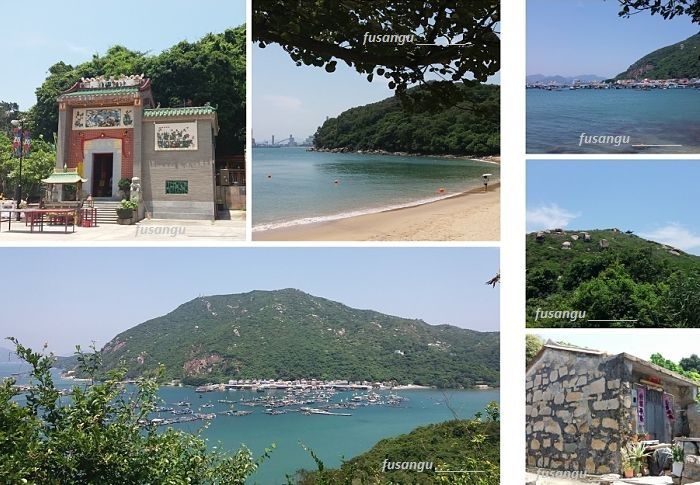
Related articles:
Other destinations:
Suzhou 1-day itinerary | Suzhou 2-day itinerary
Hangzhou 1-day itinerary | Wuzhen 1-day itinerary

